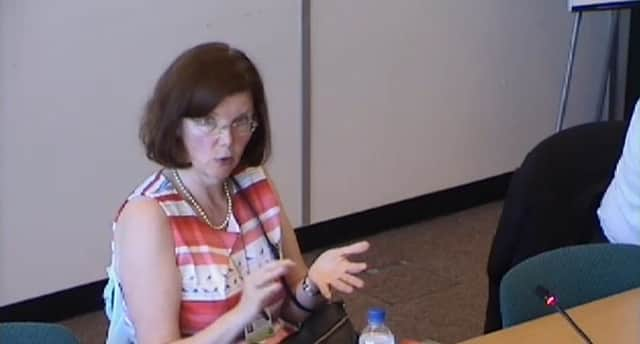Electronic database will help identify schools needing health kick


Bucks County Council is believed to be the first in the country to use the electronic system to identify schools in need of extra support from health and fitness services.
The authority’s director of public health, Dr Jane O’ Grady said: “We will have a health profile for each school and we can then work with the school and say these are the key needs and how can we take a strategic approach to this.
Advertisement
Hide AdAdvertisement
Hide Ad“We see this as a huge opportunity and we are really excitedly waiting for this data to come through.”
She told councillors on the health and adult social care select committee that schools were in support of the database.
“Physically active kids have 40% better grades than non-physically active kids.”
Councillor Margaret Aston said she was concerned pupils did not spend enough time doing physical activity.
Advertisement
Hide AdAdvertisement
Hide AdShe said: “I know I went to an independent school but everybody had to play an hour’s sport every day in the afternoon whether they wanted to or not. We were made to run around a field or play lacrosse or whatever. I cannot remember any overweight pupils.”
Responsibility for public health recently switched from the NHS to the county council.
Dr O’Grady said the health of residents had an impact on virtually all council departments.
However, she warned that their £17m budget was already being cut by the government by 7.6 per cent, equating to £1.2m.
Advertisement
Hide AdAdvertisement
Hide Ad“It is dramatic. Obviously our budget has been fully committed and we have no-where else to go so that’s going to be difficult.”
Most of the budget is spent on ‘mandatory’ services dictated by government, with only 8 per cent spent on encouraging healthier lifestyles which can prevent long-term health problems developing.
“The adult social care service could chew through my entire annual budget for lifestyle services in under a week. That tells you something about the balance between prevention and care. I’m not neccessarily saying give us more [money] but it it is a very small proportion of the prevention we need to do.”
Dr O’Grady told councillors that good public health services are a winner on people’s doorsteps: “Instead of when you’re out on the doorstop talking about potholes you could be adding real value to residents’ lives by saying you’ve reduced the numbers of deaths through smoking or premature baby death.”
Advertisement
Hide AdAdvertisement
Hide AdShe said the public perception of public health may be ‘airy fairy’ but research showed sound economic reasons for investing in it.
Dr O’Grady even encouraged councillors to stand up while she was giving the presentation due to the ill-effects of sitting for too long – and she passed around a tape so they could measure their waists and identify their risk of diabetes.